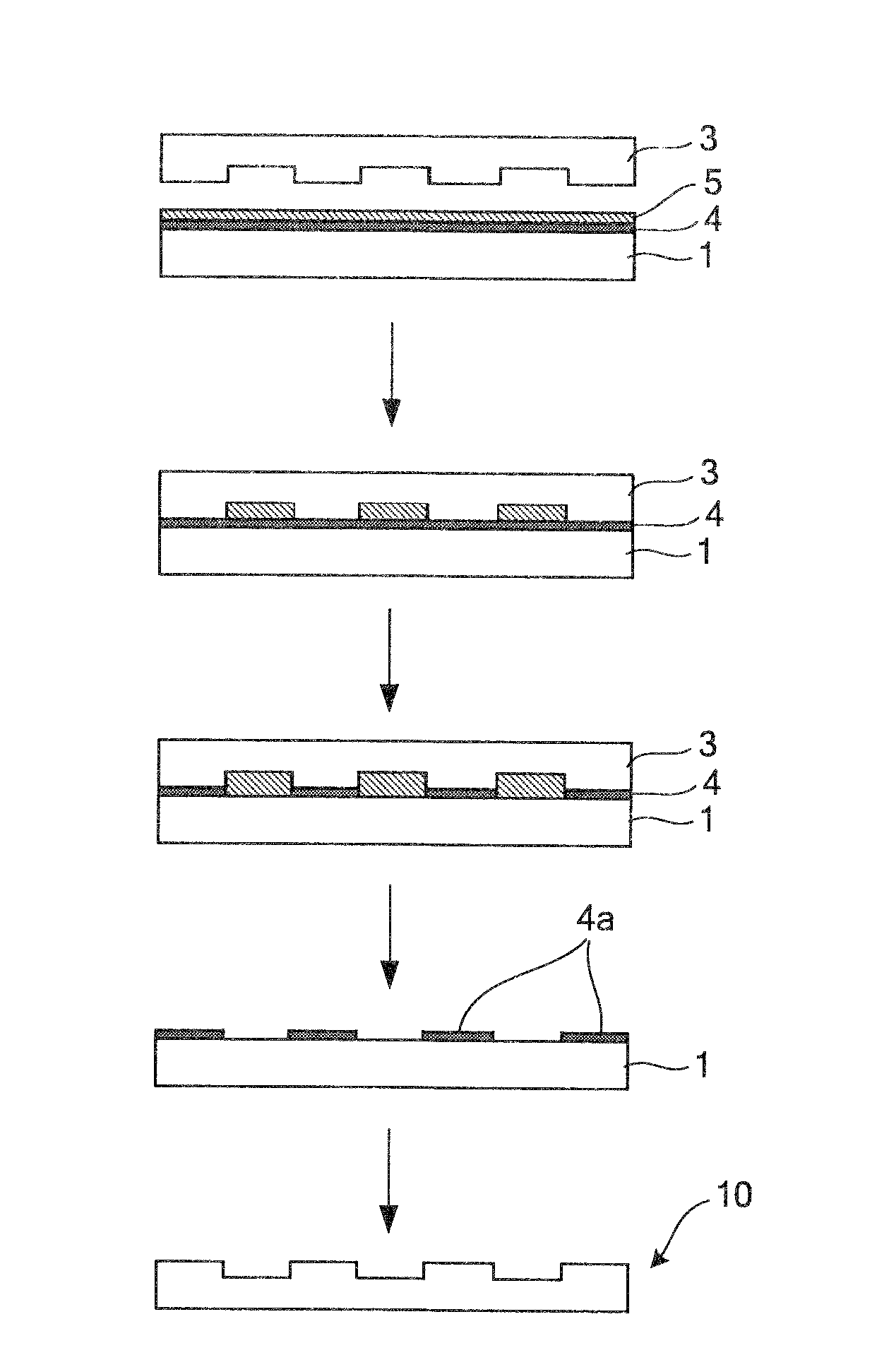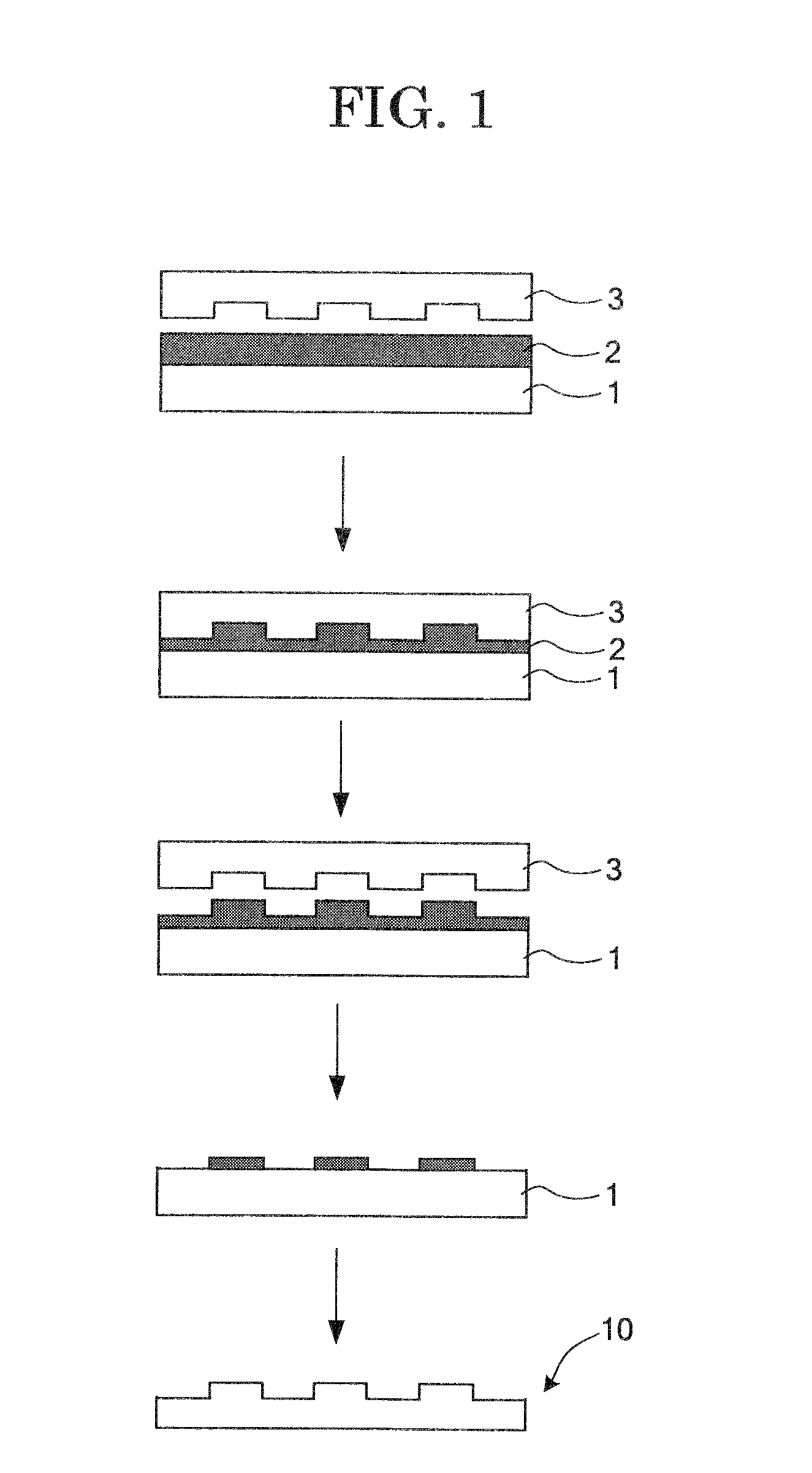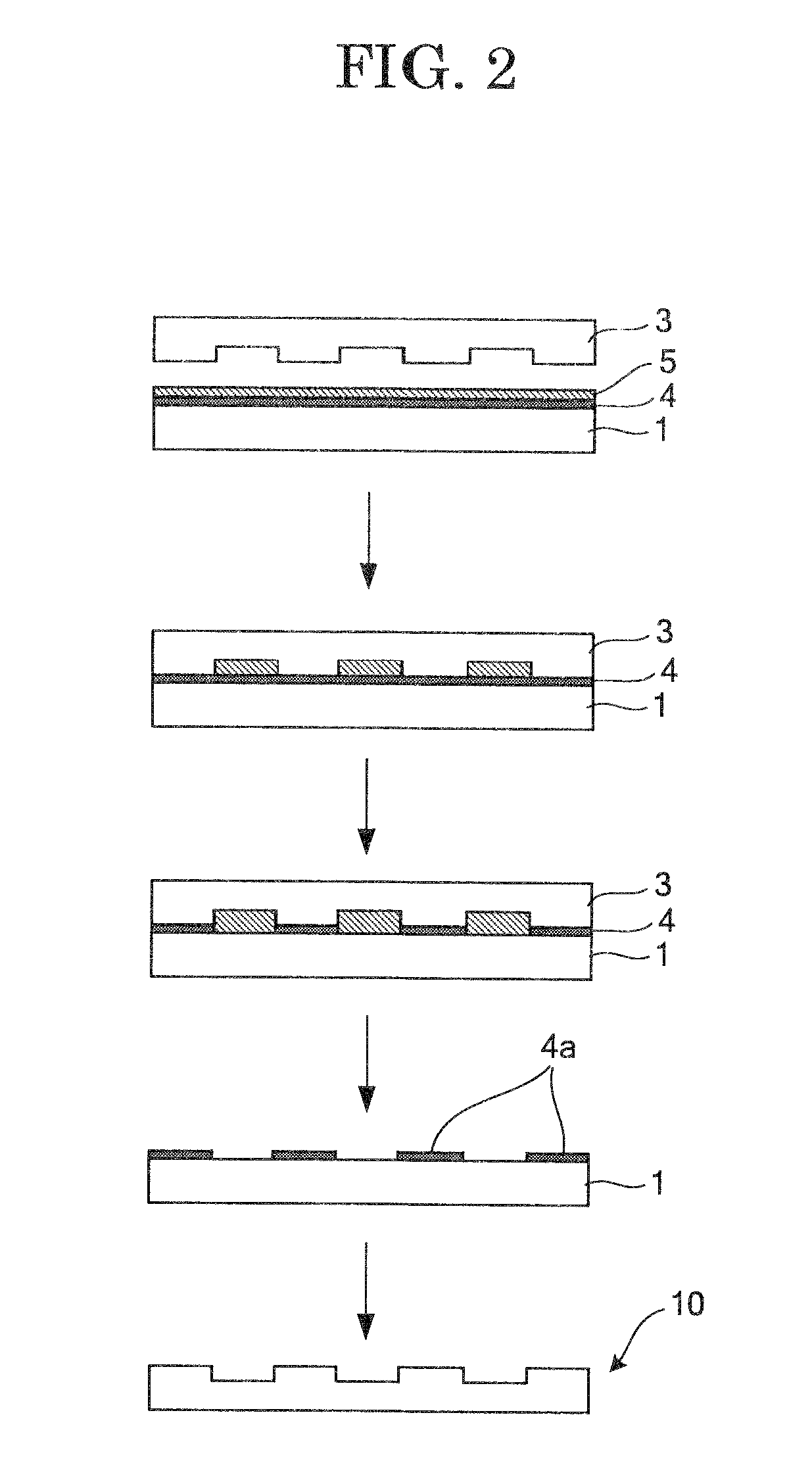Pattern forming method, substrate processing method and mold structure replication method
a substrate processing and mold technology, applied in the field of pattern forming method, substrate processing method and mold structure replication method, can solve the problems of high defect incidence, low accuracy, and resolution decline, and achieve the effect of efficiently forming a minute pattern, high accuracy and reducing the incidence of defects
- Summary
- Abstract
- Description
- Claims
- Application Information
AI Technical Summary
Benefits of technology
Problems solved by technology
Method used
Image
Examples
example 1
—Mold Structure—
[0079]A quartz structure having on its surface a line and space pattern of 600 nm in half pitch and 350 nm in depth was used.
—Substrate—
[0080]A quartz substrate having on its surface a PMMA thin film of 200 nm in thickness was used.
—Formation of a Pattern and Production of a Mold Structure by Replication—
[0081]A pattern was formed and a mold structure was produced by replication in accordance with the process shown in FIG. 2.
[0082]First of all, water was applied dropwise onto the PMMA thin film of the substrate. Then the side of the mold structure, where concave portions were provided, was pressed against the PMMA thin film and pressurized at 0.1 MPa.
[0083]Subsequently, an ultraviolet ray was applied at an irradiation intensity of 30 mW / cm2 for 3 minutes, using a low-pressure mercury vapor lamp, so as to pass through the mold structure.
[0084]Next, after the application of the ultraviolet ray, the substrate and the mold structure were separated from each other. Here, ...
example 2
—Formation of a Pattern and Production of a Mold Structure by Replication—
[0088]Example 2 was carried out in a manner similar to Example 1, except that hydrogen peroxide was used as an active species supply source instead of water. An ultraviolet ray was applied at an irradiation intensity of 30 mW / cm2 for 1 minute, using a low-pressure mercury vapor lamp. Consequently, since hydrogen peroxide is higher than water in oxidative decomposition rate, a PMMA thin film pattern, i.e. the PMMA thin film from which parts in positions corresponding to concave portions of the mold structure had been removed by oxidative decomposition, was formed on the substrate as in Example 1 even though the length of time of the etching had been shortened.
[0089]Subsequently, with the obtained PMMA thin film pattern serving as a mask, the substrate was dry-etched (subjected to ashing to remove a residual film, and then RIE with a fluorine-based gas) such that hollows having a predetermined depth were formed ...
PUM
| Property | Measurement | Unit |
|---|---|---|
| wavelength | aaaaa | aaaaa |
| wavelength | aaaaa | aaaaa |
| thickness | aaaaa | aaaaa |
Abstract
Description
Claims
Application Information
 Login to View More
Login to View More - R&D
- Intellectual Property
- Life Sciences
- Materials
- Tech Scout
- Unparalleled Data Quality
- Higher Quality Content
- 60% Fewer Hallucinations
Browse by: Latest US Patents, China's latest patents, Technical Efficacy Thesaurus, Application Domain, Technology Topic, Popular Technical Reports.
© 2025 PatSnap. All rights reserved.Legal|Privacy policy|Modern Slavery Act Transparency Statement|Sitemap|About US| Contact US: help@patsnap.com



